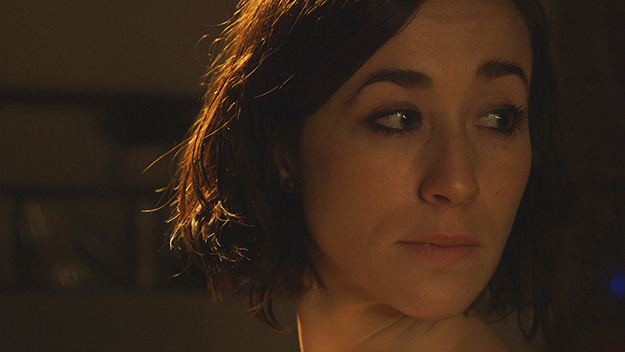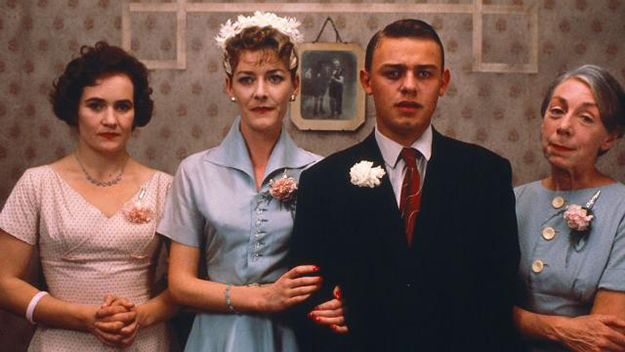Inspired: Feast of the Epiphany

Feast of the Epiphany (Michael Koresky, Jeff Reichert, and Farihah Zaman, 2018)
Making a movie is like reaching out your hand into a void and hoping that someone else grabs it. This is reflective of the nature of cinematic collaboration, and I was lucky to have such amazing co-directors on my first film, Feast of the Epiphany, Jeff Reichert and Farihah Zaman. But it also feels like past art works were our secret collaborators as well: inspirations were always out there in the dark, holding our hands and steadying us when we least expected it. We weren’t always thinking about those inspirations. We set out to make something different in structure and concept: a film that was half fiction, half documentary, in which the first half was clearly written, acted, and staged, and the second half was clearly functioning within a documentary mode, but which would hopefully leave enough space for each half to inform the other, letting the audience think about what constitutes storytelling.
We’re all indebted to the dead, so it’s fitting that Feast is indebted to “The Dead.” It wasn’t until I had finished a first draft of the scripted portion of the film that I realized how much I had been tacitly inspired by James Joyce’s 1914 story. I should have known it was coming: I’ve read it dozens of times, seen John Huston’s perfect 1987 film adaptation almost as many, and have since even attended an immersive theater production of it, yet the story remains a source of awe and mystery. In it, a seemingly joyous annual holiday gathering eventually gives way to its characters’ thoughts of mortality. That story—which I think has the most perfect concept and structure of any story I’ve ever read—is just part of me at this point. Since we eventually came to realize I had written what was essentially an oblique Brooklyn version of the story, greatly informed by the death of my father, we decided to screen Huston’s film for the crew pre-production.
If that film set the tone, I’d say Jean Sibelius set the rhythm. The Finnish composer’s incidental music from the 1892 play Pelléas and Mélisande had been in rotation on my iPod for a while, and I couldn’t get two of its lighter themes, “The Three Blind Sisters” and “Pastorale,” out of my head when thinking about the movie, even in the early stages before we had shot anything. Sibelius’s music, which shifts between playful and swooning, just seemed to fit the dual concept of the film. It also had a catchy melodic quality that we later realized instilled a kind of subtle recognition in the viewer, all the easier to create implicit aural connections between the film’s two disparate halves.

Distant Voices, Still Lives (Terence Davies, 1988)
There’s a lot of silence in the film, but music is essential throughout, even when it springs spontaneously out of the filmmakers—at one point Farihah was humming to some cows on the farm at sunset, and we decided to keep it in—or when it emerges seemingly spontaneously out of the characters. The unexpected kitchen sing-along was consciously inspired by Terence Davies’s Distant Voices, Still Lives, which is a kind of an unusual version of the folk musical, in which the mostly broken, traumatized characters find connection via shared knowledge of pop standards. It was important that these friends—and strangers—come together despite their dissociation and alienation from themselves and each other, and a song just felt like the right way to make that happen.
No one’s done that better than Davies; every song he uses is like a well of memory just rising to the surface, a brief moment of joy that sinks down again. There’s simply no filmmaker better at imbuing characters with the weight of the past. Davies’s visual positioning of actors and use of windows were also very important to some of the design of the film’s first half, achieved by the help of our brilliant DP, Ashley Connor, and expertly paced thanks to the nimble editing of the wonderful Ben Garchar. It was essential that these people seem somehow frozen in time and grief so that when we transition to the open-air spaces of rural upstate, it would just naturally feel like a release. In a way, the nonfiction second half of the film is invisibly holding the hands of the fictional characters from the first, telling them it’ll all be all right.
Michael Koresky is a writer, editor, and filmmaker in Brooklyn. He is cofounder and editor of the online film magazine Reverse Shot, a publication of Museum of the Moving Image; a regular contributor to the Criterion Collection and Film Comment, where he writes the biweekly column Queer and Now and Then; and the author of Terence Davies, published by University of Illinois Press, 2014.







